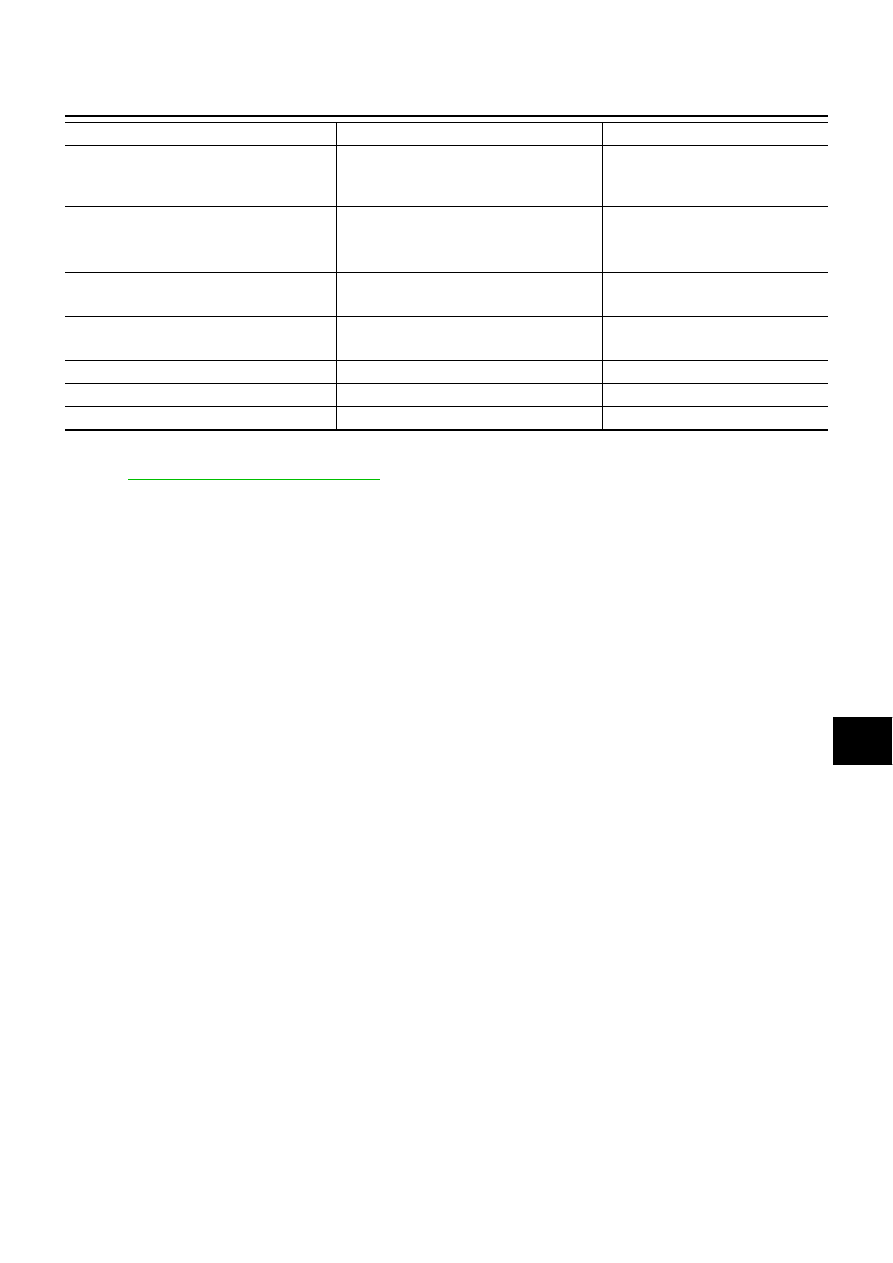Nissan Murano Z50 (2006 year). Manual - part 25

BCM (BODY CONTROL MODULE)
BCS-9
C
D
E
F
G
H
I
J
L
M
A
B
BCS
Revision: 2006 August
2006 Murano
CAN Communication Unit
NKS001VH
Refer to
LAN-32, "CAN Communication Unit"
Seat belt warning chime
●
Combination meter [Seat belt buckle
(driver side) switch]
●
Ignition switch
Combination meter
(warning buzzer)
Front wiper and washer system
●
Combination switch
●
Combination meter
●
Ignition switch
IPDM E/R
Rear wiper and washer system
●
Combination switch
●
Ignition switch
Rear wiper motor
Rear window defogger
●
Rear window defogger switch
●
Ignition switch
IPDM E/R
A/C switch signal
Unified meter and A/C amp.
ECM
Blower fan switch signal
Unified meter and A/C amp.
ECM
Low tire pressure warning system
Remote keyless entry receiver
Combination meter
System
Input
Output